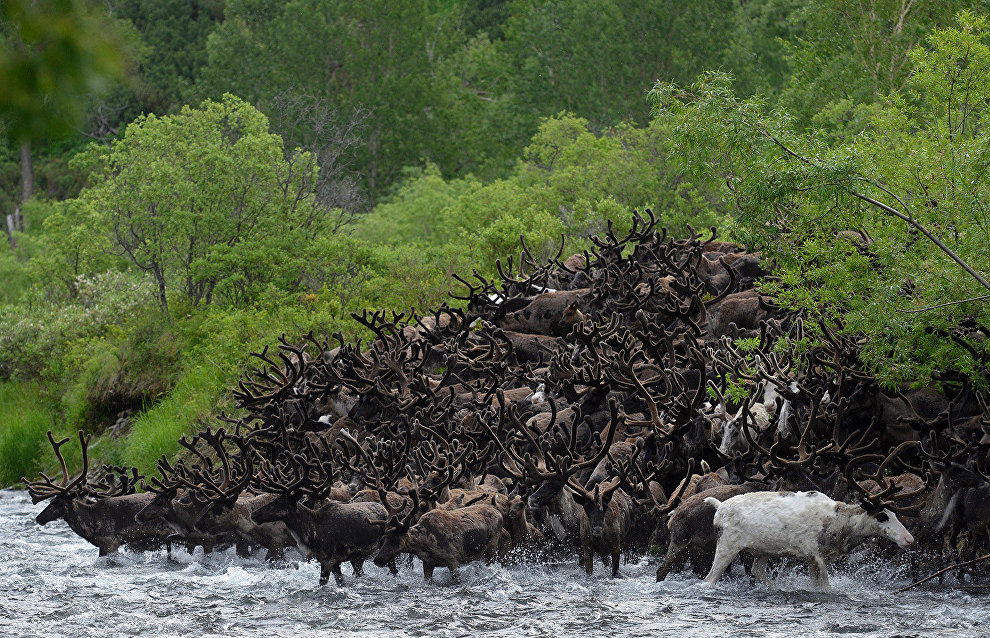Yakutia to amend program for developing Arctic and sub-Arctic areas
The Government of the Republic of Sakha (Yakutia) is set to amend the program for the socioeconomic development of the region's Arctic and sub-Arctic areas in 2014-2017 and up to 2020, reports the Republic's press service.
These amendments are related to reindeer-breeding development, a vital agriculture sector whose state predetermines the lifestyle of the indigenous population and its living standards.
As of January 1, 2014, the republic had 177,100 reindeer, including 119,600 reindeer in Arctic and sub-Arctic areas (67.5 percent of the total reindeer population). These areas can accommodate 284,700 reindeer and are currently used to 42 percent of their total capacity.
Today, Arctic and sub-Arctic areas are hard pressed for professional reindeer breeders. The local reindeer-breeding sector employs just 1,188 people at a time when it needs 1,627.
The standard procedure implies that one reindeer-breeding team should have at least one permanent base along reindeer-grazing routes. As of January 1, 2014, Arctic and sub-Arctic areas had 106 standard reindeer-breeding teams with 102,500 reindeer. Based on the number of herds, it is necessary to build 28 more reindeer-breeding bases.
The republic has determined that it is necessary to improve employees' living and working conditions, to introduce innovative technologies and to make the sector more profitable. It is hoped that these measures will resolve the above-mentioned issues, the press service reports.
"We can make the sector more profitable with regional support, by expanding transport-logistics services and by helping establish sales markets for the traditional agricultural goods. Other measures include expanding trade outposts, protecting pastures and ensuring their cost-effective use, completing land-cadaster projects for the development of the Arctic reindeer-breeding sector, state support for animal selection and animal husbandry projects to improve reindeer breeding, expanded processing and guaranteeing sustained sales of reindeer related goods and establishing workshops for primary and in-depth processing of the reindeer-breeding sector's goods in regions traditionally populated by indigenous ethnic groups," the report notes.
A range of zoological-veterinary measures also needs to be completed for sustained development. Today, reindeer-breeding teams have just one corral per herd. In all, three permanent corrals for grazing bighorn cattle need to be built per herd. Some areas are likely to be hit by infectious diseases, including anthrax, rabies, necrobacteriosis and brucellosis. Therefore it is imperative that a minimum of 23 permanent corrals be completed.
Eight reindeer-breeding bases, 26 standard corrals for 1,000 reindeer, 109 kilometers of fences and six modular slaughterhouses/primary meat-processing facilities are to be built at the farms.
